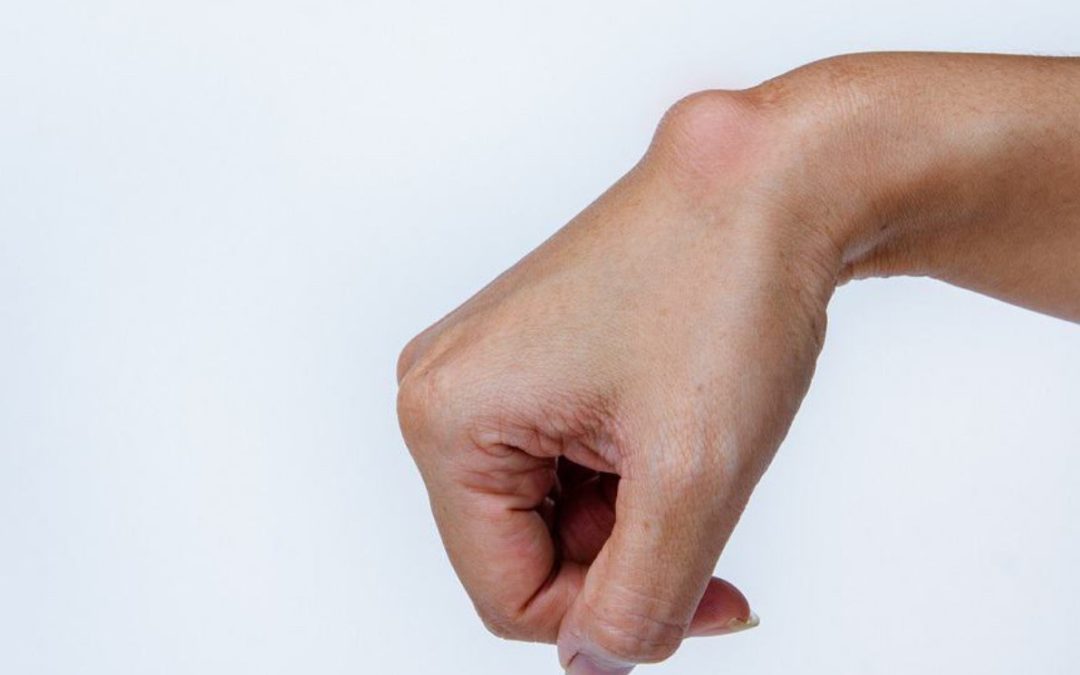What is a wrist ganglion?
A wrist ganglion is a fluid-filled sac that appears as a lump under the skin. It is often painless, but depending on its location, it may cause enough discomfort to require treatment.
Ganglion:
- Grows out of the tissues surrounding a joint, such as ligaments, tendon sheaths, and joint linings
- Can be large and obvious or small and deep. It can also fluctuate in size without any special cause or reason
- Occurs most frequently on the joints and tendons of the wrist. Most are found on the top of the wrist and by the nail of the finger or on the front of the finger (called mucous cyst)
- Can appear almost suddenly, or can grow slowly over a period of months or years
- Most often affects people in their 30s and 40s
- More common in women than men
- Doesn’t have a specific cause and is not related to any activity
- Ganglion cyst is not cancerous
What causes a ganglion?
In most cases it is not clear why ganglions occur. Proposed causes include trapped joint fluid or outpouching of the joint lining. Another possible cause is degenerating connective tissue. Most ganglions arise spontaneously. They can be associated with:
- Women are more likely to be affected than men
- History of injury
- Ganglion cysts that develop at the end joint of a finger (mucous cysts) are typically associated with osteoarthritis in the finger joint, and are more common in women between the ages of 40 and 70 years
- Repetitive hand use- common among gymnasts, who repeatedly apply stress to the wrist
What are the symptoms of a ganglion?
Many ganglions remain asymptomatic. Some can grow large enough to be unattractive, but otherwise cause no other symptoms. They may not cause any symptoms for months or years and then suddenly cause discomfort or affect range of motion. The symptoms may include:
- If a ganglion puts pressure on the nerves, it can cause numbness and tingling
- Weakened grip and a reduced range of motion
- Pain when direct pressure is placed on a ganglion
- Ganglions near the fingernail may produce grooves in the nail
How is a ganglion diagnosed?
Dr Mackenzie will take a detailed history including complete medical history, how the hands have been used, any prior injuries, how long you had the ganglion, whether it changes in size, and whether it is painful.
That will be followed by examination of the hand and wrist. Pressure may be applied to identify any tenderness. Because a ganglion cyst is filled with fluid, Dr Mackenzie may shine a small light, such as a pen light, through it to confirm that it is a ganglion cyst.
If the diagnosis is uncertain then scans may be helpful, including ultrasound scan to confirm that the lump is a cyst or MRI for painful occult ganglions. An x-ray may be taken- although x-rays will not show a ganglion cyst, they can be used to rule out other conditions, such as arthritis or a bone tumor.
Why do I need surgery?
Ganglions are harmless and can safely be left alone. Many disappear spontaneously and many others cause little trouble. There are no long-term consequences from leaving the ganglion untreated.
However, if the ganglion causes prolonged and constant symptoms and symptoms are not relieved by non-surgical measures, surgery may be needed.
What is the treatment for a wrist ganglion?
Non-surgical treatment
Non-surgical treatments are usually tried first. Treatment begins with:
- In many cases ganglions can simply be observed
- Splint may relieve symptoms and cause the ganglion to decrease in size (swelling in ganglion is often aggravated by using the joint it is affecting). As pain decreases, exercises to strengthen the wrist and improve range of motion may be recommended
- Aspiration of the ganglion. The area around the ganglion is numbed and the cyst is punctured with a needle so that the fluid can be withdrawn. Aspiration can provide immediate relief to the discomfort caused by ganglions. However, because this method does not remove the entire ganglion, it often returns
Surgical treatment
If non-surgical options fail to provide relief or if the ganglion recurs, surgical alternatives are available. The goal of surgery is to remove the entire ganglion intact.
This operation can be performed under local anaesthetic (mucous cyst) of fingers) or under regional/general anaesthesia (wrist ganglions).

Recent Comments